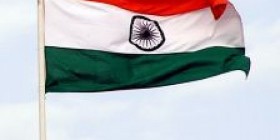Forced to pick cotton, grow cannabis, prostitute themselves, fight wars or clean up after the wealthy — some 35.8 million people are currently trapped in modern-day slavery, a new report said Monday.
The 2014 Global Slavery Index (GSI), in its second annual report, said new methods showed some 20 percent more people were enslaved across the world than originally thought.
“There is an assumption that slavery is an issue from a bygone era. Or that it only exists in countries ravaged by war and poverty,” said Andrew Forrest, chairman of the Australian-based Walk Free Foundation which produced the report.
The foundation`s definition of modern slavery includes slavery-like practices such as debt bondage, forced marriage and the sale or exploitation of children, as well as human trafficking and forced labour.
The report, which covers 167 countries, said modern slavery contributed to the production of at least 122 goods from 58 countries.
The International Labour Organization (ILO) estimates profits from this forced labour are $150 billion (120 billion euros) a year.
“From the Thai fisherman trawling fishmeal, to the Congolese boy mining diamonds, from the Uzbek child picking cotton, to the Indian girl stitching footballs… their forced labour is what we consume,” read the report.The biggest offender, with the highest proportion of its population enslaved, remains the west African nation Mauritania, where slavery of black Moors by Berber Arabs is an entrenched part of society.
Mauritania has anti-slavery legislation but it is rarely enforced and a special tribunal set up in March has yet to prosecute any cases, the report said.
In second place was Uzbekistan where, every autumn, the government forces over one million people, including children, to harvest cotton.
Countries like Qatar in the Middle East were a major destination for men and women from Africa and Asia who are lured with promises of well-paid jobs only to find themselves exploited as domestic workers or in the construction industry.
The countries doing the most to combat the problem were the Netherlands, Sweden, the United States, Australia, Switzerland, Ireland, Norway, the United Kingdom, Georgia, and Austria.Europe, while at the bottom of the list — with Iceland and Ireland the best ranked — has 566,000 people involved in forms of modern slavery, with people trafficked into Ireland to grow cannabis, or forced into begging in France.
“Trafficking for commercial sexual exploitation accounted for almost 70 percent of identified victims while trafficking for forced labour accounted for 19 percent,” read the report.
“The global economic crisis and austerity measures of the EU have meant that increasing numbers of Bulgarians and Romanians migrate in search of highly paid jobs. Some of these workers can be tricked or coerced into situations of exploitation.”
The highest numbers of modern slaves were found in India with an estimated 14.29 million enslaved.
However the Index said India had recently taken important steps to combat the problem, strengthening its criminal justice framework through legislative amendments and increasing the number of its Anti-Human Trafficking Police Units.
Africa faces some of the biggest challenges, the report said, with armed forces and rebel groups from Somalia to the Central African Republic using child soldiers to mineral-rich Zambia, Angola, and the Democratic Republic of the Congo forcing children and adults to “labour in dangerous mines.”
Nigeria is a major source of human trafficking to Europe. In one example, Nigerian women get trapped in a cycle of debt bondage in the Italian sex industry.
“These findings show that modern slavery exists in every country. We are all responsible for the most appalling situations where modern slavery exists and the desperate misery it brings upon our fellow human beings,” said Forrest






Leave a reply